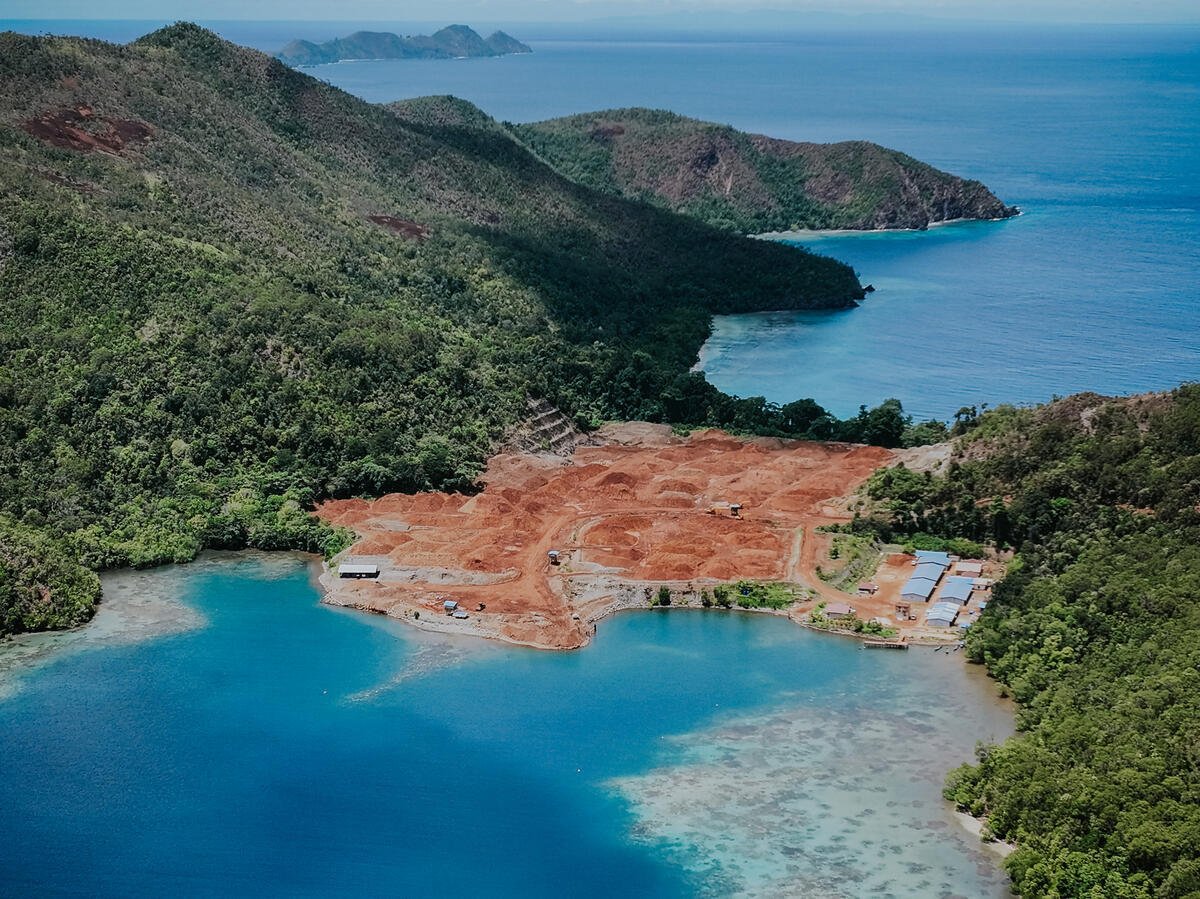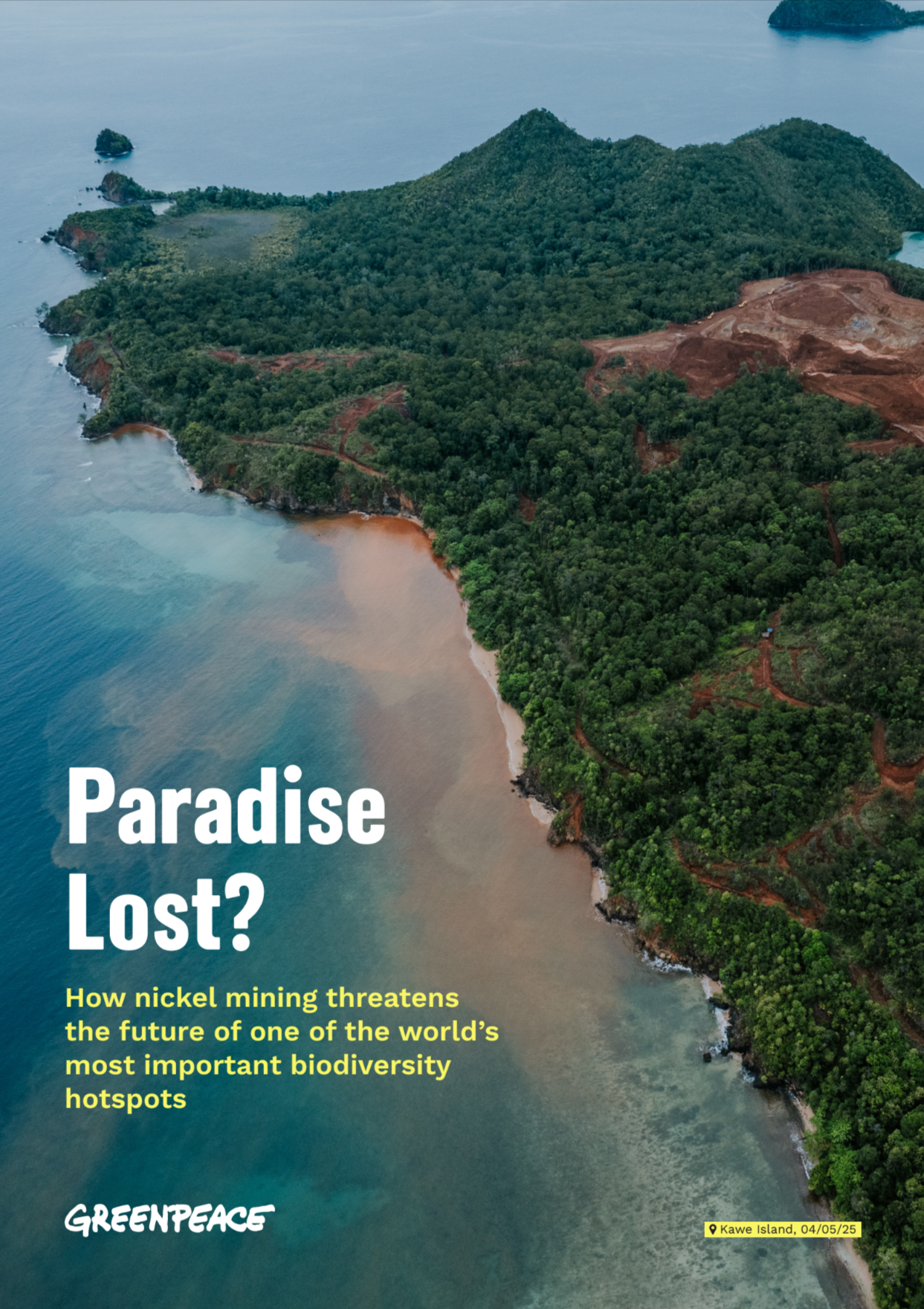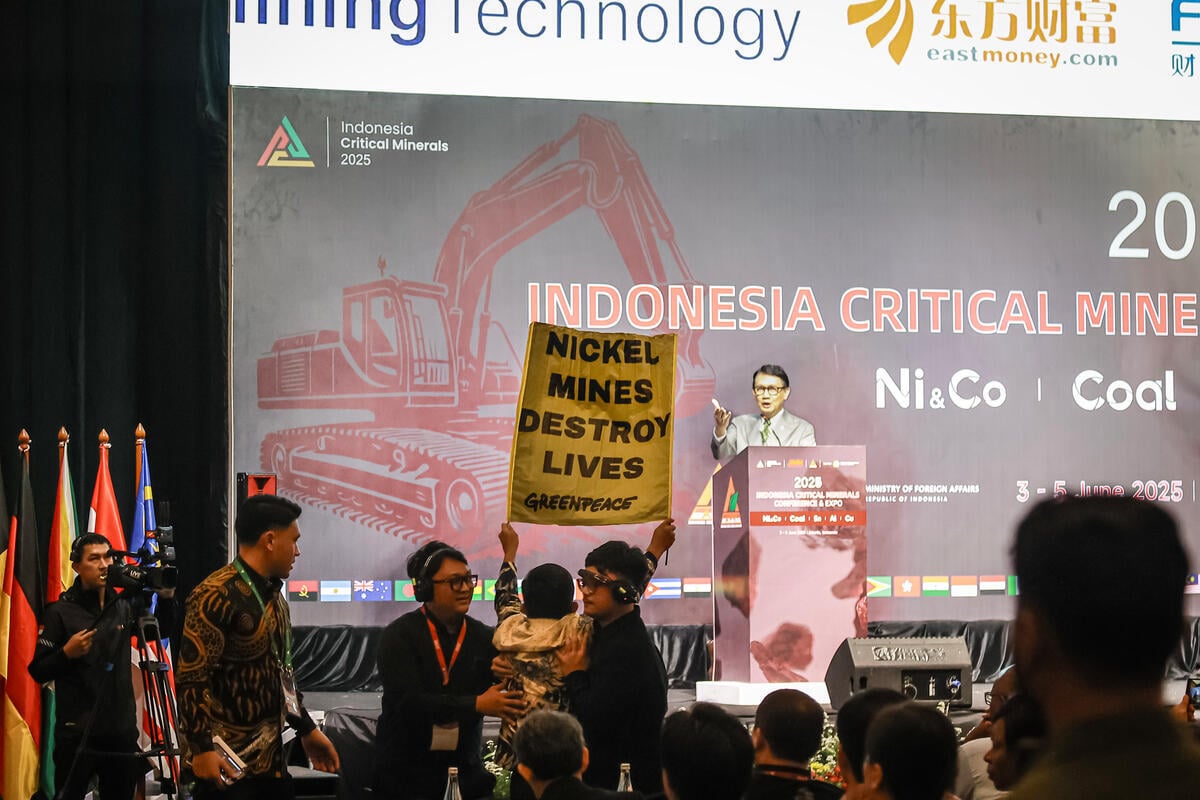Jakarta – Greenpeace Indonesia welcomed the release today of a report from palm oil producer Golden Agri-Resources (GAR) identifying which forests should be protected as an important step forward in the fight against deforestation.
The High Carbon Stock (HCS) report, part of GAR’s Forest Conservation Policy, was launched at a workshop hosted by the Indonesia government’s REDD Task Force in Jakarta. The Task Force is working to fulfill President Yudhoyono’s commitment to reduce emissions by 26%, or 41% with international help, by 2020. (1)
“Golden Agri-Resources is providing a clear industry example that it is possible for a company to identify which forests should be set aside for conservation. This represents a critical milestone in the fight to end deforestation for palm oil,” said Bustar Maitar, head of Greenpeace Indonesia’s forest campaign.
In February 2011 Greenpeace acknowledged GAR’s commitment to eliminate deforestation from all of its operations and move to a zero deforestation footprint (2).
Over the past year, GAR has been collaborating with The Forest Trust (TFT), a global non-profit organisation working to deliver responsible products, and Greenpeace, to design a set of strong standards for the identification of forest conservation areas. This effort resulted in the first study of its kind aiming to develop a practical, scientifically robust and cost effective methodology to define and identify areas of High Carbon Stock forests for conservation. This included a provisional threshold for HCS of greater than 35 tonnes of carbon per hectare. (3)
“This development can significantly help the Indonesian government fulfill its commitment to reduce the country’s greenhouse gas emissions from deforestation, through being able to identify forests areas to be conserved and low-carbon degraded forests which may be developed. It will be critical for the government of Indonesia to fully support GAR’s efforts by facilitating a framework to enable carbon stock and forest conservation, reviewing, and amending regulations if necessary, and insisting on similar requirements across all industries operating in forest areas,” said Maitar.
Greenpeace has waged a three-year campaign to stop deforestation for palm oil. GAR’s commitment today clearly shows that industry and civil society can work together to implement solutions to safeguard the environment and the livelihoods of dependent communities, at the same time as ensuring continued economic growth. Indonesia’s government, for its part, should redouble its efforts to improve forest governance and strengthen its enforcement of existing forestry laws.
GAR’s sister company, Asia Pulp and Paper (APP), which is responsible for widespread deforestation to source paper and packaging products, should follow GAR’s initiative and finally get serious about eliminating deforestation from its supply chain.
Greenpeace will continue to monitor the implementation of GAR’s global Forest Conservation Policy and urges the rest of the industry to follow GAR’s lead. Palm oil and other forest use sectors, such as pulp and paper, need to create and apply global standards to ensure that deforestation has been eliminated from its supply chains.
Notes to the Editor:
(1) The HCS Forest Study Report is available in full in English:www.goldenagri.com.sg/pdfs/misc/High_Carbon_Stock_Forest_Study_Report.pdf.
The Foreword and Executive Summary of the report are available in Bahasa Indonesia: www.goldenagri.com.sg/pdfs/misc/LaporanPenelitianHutanber-StokKarbonTinggi__KataPengantardanRingkasanEksekutif.pdf
(2) Golden Agri-Resources. Golden Agri-Resources Initiates Industry Engagement for Forest Conservation. 9 February 2011. https://www.greenpeace.org/static/planet4-southeastasia-stateless/2019/04/110209-Golden-Agri-Resources-Initiates-Industry-Engagement-for-Forest-Conservation.pdf
(3) As part of its FCP implementation, GAR set a provisional carbon threshold to not develop land that contains over 35 tonnes of carbon per hectare of above ground biomass (AGB). This figure is now supported by the results of the HCS forests study.
The study found that six strata of vegetation cover could be identified.
Vegetation cover definitions:
High Density Forest (HK3) – Remnant forest or advanced secondary forest close to primary condition. Average 192 tC/ha;
Medium Density Forest (HK2) – Remnant forest but more disturbed than High Density Forest. Average 166 tC/ha;
Low Density Forest (HK1) – Appears to be remnant forest but highly disturbed and recovering (may contain plantation/mixed garden). Average 107 tC/ha;
Old Scrub (BT) – Mostly young re-growth forest, but with occasional patches of older forest within the stratum. Average 60 tC/ha;
Young Scrub (BM) – Recently cleared areas, some woody regrowth and grass-like ground cover. Average 27 tC/ha;
Cleared/Open Land (LT) – Very recently cleared land with mostly grass or crops, few woody plants. Average 17 tC/ha;
The study supports the provisional 35tC/ha HCS threshold falling between vegetation strata BT (Old scrub, regenerating forest) and BM (recently degraded or cleared areas), and this draws a very neat threshold for what is forest and what is so degraded that it is not, and that the lower carbon classes of HCS forest include a potential for regeneration of carbon stock.
Media Contact:
Hikmat Soeritanuwijaya, Media Team Leader, Greenpeace Southeast Asia – Indonesia
M: +62 8111805394



